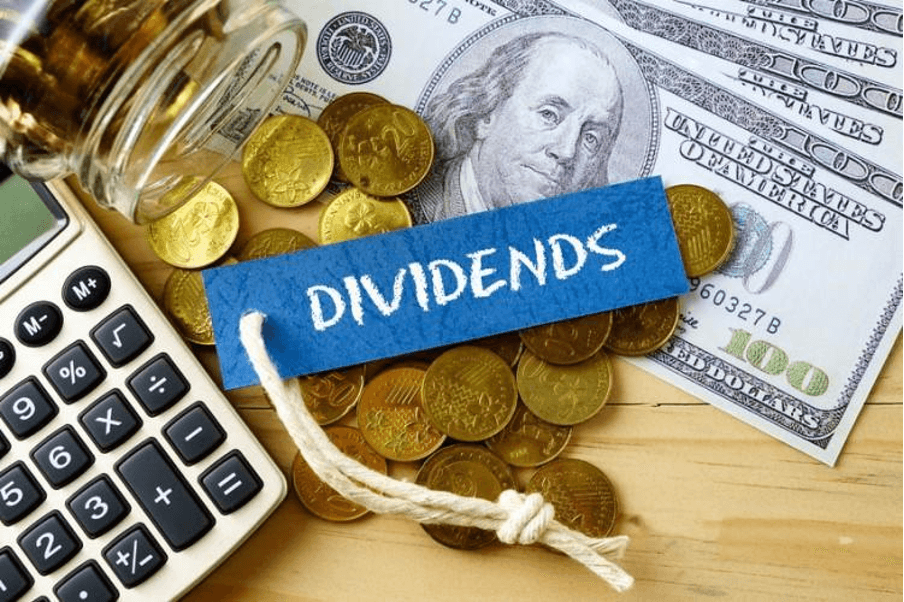Why should I invest in dividend stocks?
At first, you need to understand why choosing to invest in dividend stocks is a good strategy, especially for long-term investors and for people who would like to generate passive income.
Currently, we are seeing some signs of danger in the market, and the fear of an upcoming market crash is growing among investors. The Nasdaq tumbled 2.6% Monday and was down big early Tuesday, before it recouped most of its decline, as Wall Street sold technology stocks amid renewed inflation worries.
The Nasdaq has slipped below its 50-day moving average and is down 5% from its recent highs. Plus, the Dow posted its biggest one-day decline since late February on Tuesday, while the S&P 500 slipped 0.87%.
According to Morgan Stanley equity strategist Michael Wilson, we are getting into a volatile ride, at least in the near term.
One of the main advantages of dividend stocks is that while they can provide investors with predictable income they also offer long-term growth potential. On the other hand, not all dividend stocks are great investments and many investors are not sure on ‘what to look for’ in a dividend stock.
The right dividend stock can be a fantastic addition to your retirement fund. Stable businesses with high dividend yields will satisfy investment income requirements while letting you rest easy at night. Those are two of the most important requisites for retiree investment portfolios.

What is dividend yield?
The dividend yield–displayed as a percentage–is the amount of money a company pays shareholders for owning a share of its stock divided by its current stock price. Real estate investment trusts (REITs), master limited partnerships (MLPs), and business development companies (BDCs) pay higher than average dividends; however, the dividends from these companies are taxed at a higher rate.
It’s important for investors to keep in mind that higher dividend yields do not always indicate attractive investment opportunities because the dividend yield of a stock may be elevated as the result of a declining stock price.
How to calculate dividend yield:
Dividend yield=annual dividends per share/price per share
You can find below our suggestion of 3 high dividend yield stocks above 7% which are rated as ‘Strong buy’ by the analysts and have also low P/E ratio:

1. New Residential Investment Corp. (NRZ)
Our first choice is a real estate investment trust(REIT), since this kind of companies have a reputation between investors as solid dividend payers. It’s important for investors to keep in mind that higher dividend yields do not always indicate attractive investment opportunities because the dividend yield of a stock may be elevated as the result of a declining stock price.
New Residential Investment has a current dividend yield of 7,80% and a P/E ratio and it’s one year return is 70,7%. Moreover, if we compare it’s current share price to it’s fair value, we can see that the Company is near to 50% undervalued compares to fair value.
Analysts rate NRZ as a strong buy stock and Eric Hagen sets a target price of $13, which implies a 25% upside for the year ahead.
According to it’s recent 1Q21 financial release, the Company showed a net income of $301 million, up from $101 million at the end of Q4. Additionally, the Company declared a quarterly dividend of 20 cents per share; the payments totaled $82.9 million. At the declared rate, the dividend annualizes to 80 cents per common share, for a yield of 7.5%. This compares favorably to the ~2% yield found among S&P-listed companies.
NRZ shares are up 77% in the past 12 months, gaining as the company switched from net losses at the height of the corona crisis to profitability in the last four quarters. To take advantage of the share appreciation, and to raise additional capital, the company announced a public offering of shares in April. The sale generated gross proceeds of $522.4 million on 51.7 million shares sold. The funds raised were used to acquire Caliber Home Loans, with plans to integrate the acquisition into NRZ’s wholly owned mortgage origination service. The transaction is expected to close in Q3 of this year.
2. MPLX LP(MPLX)
Our second choice is a limited partnership company, MPLX LP. The Company operates in the energy sector and the Oil & Gas Midstream industry. It’s current dividend yield is 9,66% and it’s P/E ratio at 11.38.
MPLX has gained 2.7% since it reported first-quarter 2021 results on May 4. Higher tariff rates and increased fractionated volumes primarily aided the stock. The partnership reported first-quarter earnings of 68 cents per unit, beating the Zacks Consensus Estimate and improving from year-ago earnings, both recorded at 61 cents.
Revenues of $2,339 million increased from first-quarter 2020 sales of $992 million. Moreover, the top line beat the Zacks Consensus Estimate of $2,045 million. The partnership’s strong quarterly results were driven by favorable average tariff rates from the crude oil pipelines.
Distributable cash flow attributable to MPLX in first-quarter 2021 was $1,137 million, providing 1.56X distribution coverage, up from $1,078 million in the year-ago quarter. Distribution per unit was 68.75 cents for the reported quarter, flat with the year-ago quarter.
Net cash flow from operating activities for the quarter under review increased to $1,124 million from $1,009 million recorded in the corresponding period of 2020.
This is a great opportunity for investors to acquire sustainable cash flow at a discount. The stock’s 10% dividend yield is exceptionally high, implying that the market expects the distribution to be slashed. If the worst of our economic turmoil is behind us, then it’s hard to imagine that MPLX will see its dividend reduced that drastically. Even if it were cut in half, the yield would still be well above average at 5%. This MLP is producing too much income for retirees to ignore.
3. Starwood Property Trust, Inc.(STWD)
Starwood Property trust has a dividend yield of 7,85% and a P/E ratio of 13,76. Starwood Property Trust Inc. (NYSE:STWD) is a commercial mortgage REIT, which originates, finances, acquires and manages loans, other debt and equity investments. Starwood and other names in the commercial mortgage space tend to benefit from low interest rates as they can borrow and invest at low costs. The company had its initial public offering in 2009. Last year, Starwood had revenue of $1.1 billion and is currently valued at $7.1 billion.
Starwood’s dividend has been maintained at the same amount of $1.92 since 2014. As you might expect, dividend growth has compounded at a very low rate, less than 1%, since 2011.
Where Starwood makes up for its lack of dividend growth is with its yield. Shares yield 7.7%, compared to the 10-year average yield of 9.4%. This would be the stock’s lowest yield since at least 2011 if it were to average the current yield for an entire year. On the other hand, shareholders are receiving 5.5 times the income of the S&P 500 Index.
Final thoughts
Some investors, such as retirees, are heavily reliant on dividends for their income. For these investors, the dividend yield of their portfolio could have a meaningful effect on their personal finances, making it very important for these investors to select dividend-paying companies with long track records and clear financial strength. For other investors, dividend yield may be less significant, such as for younger investors who are more interested in growth companies that can retain their earnings and use them to finance their growth.
So while the companies listed above should make great long-term dividend investments, don’t worry too much about day-to-day price movements. Instead focus on finding companies with excellent businesses, stable income streams, and (preferably) strong dividend track records, and the long term will take care of itself.





